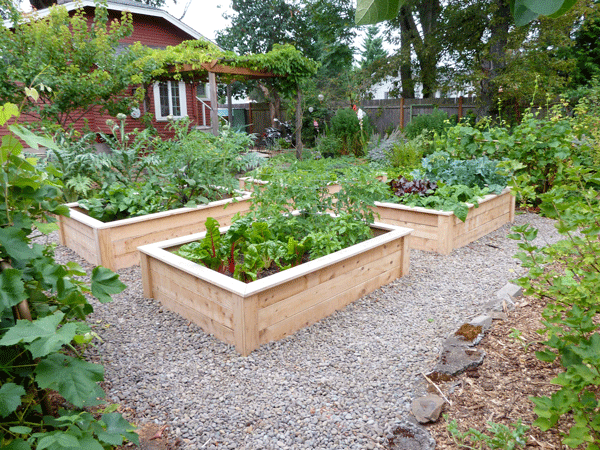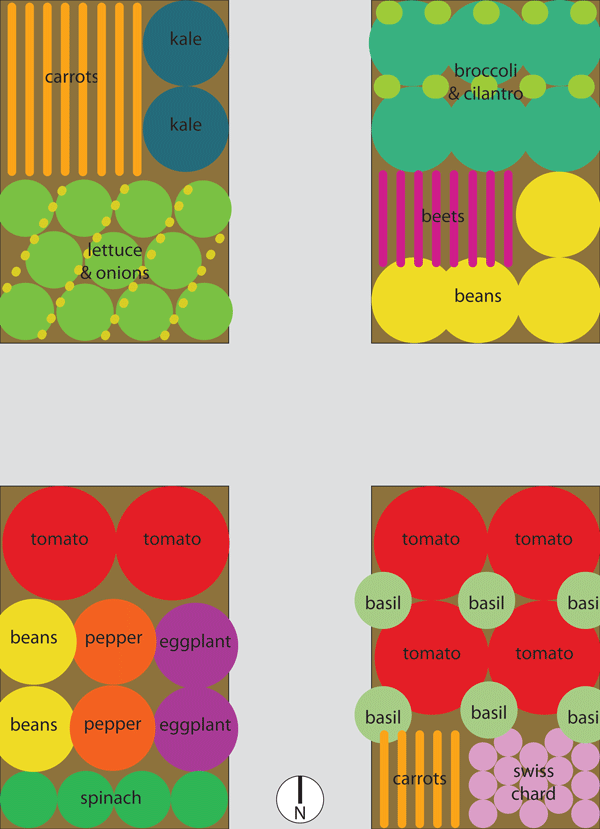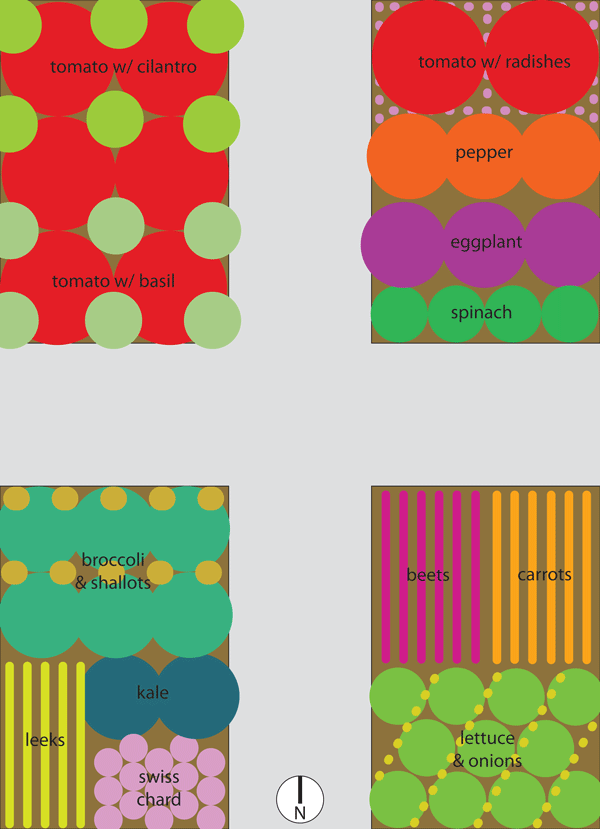The beds came from NaturalYards, a local Oregon company, and each measure 4′ x 6′. That gives me just shy of 100′ of growing space in the raised beds. It’s hard to juggle good crop rotation while cramming in enough produce to feed our family, so typically every year I make a garden plan to keep me organized.
After looking at last year’s plan, I made some changes for 2013. First, I am rotating what grows where. Different plants sap different nutrients from the soil, so good crop rotation will help keep the soil balanced. It may also cut down a bit on disease to move them to a new spot, in case the bad guys try to overwinter in the soil.
Next, I’m thinking about what we were overwhelmed with last year vs. what we were able to preserve. We didn’t get enough tomatoes, peppers and eggplants last year, so more this time around. The bush beans weren’t worth the space, since I can more efficiently grow them vertically around the garden. And somehow I missed planting leeks last year?!? They are versatile for year round harvesting, along they take time to mature, so I’m planting lots this year.
Finally, our beds are all pretty filled right now with winter vegetables. Winter crops to be harvested in early spring, like rutabaga, will be replaced with cool weather crops like kale and chard. Other winter veggies won’t be pulled until late spring, like celery and carrots, right when it’s time to transplant in a whole bed of tomatoes.
It pays to be strategic about your garden plan, especially with limited space. Take these chilly evenings to pour over your seed collection and draw out your plan. Leave enough room for each plant to reach their mature size, think about companion planting (planting onions in between lettuces, etc), and get those seeds started!








 This has become my
This has become my
 This is from South
This is from South


 All the ornamental grasses get cu
All the ornamental grasses get cu



I would love to know how you grow your tomatoes. I am also using raised beds. i have 3- 4×8 beds, and a 2 foot wide bed around the perimeter of three sides approx 6o feet. The last couple of years I planted my tomatoes about 1ft apart, but reading recently they should be 18″-24″ apart. Last yr I got next to nothing out of the garden due to dry weather so thinking of adding irrigation.
I have two raised beds. One is 13′ x 3’x 10″, the other is 96’x3’x6″.
How can I adapt your plans to my space?
Oops, that is not 96′ it is 9′!!!!!
Lynne, You could try splitting my past garden plans in half lengthwise to start. But I would recommend breaking out the graph paper! Draw out the size and shape of your beds on the graph paper – maybe each square equals 6″? Then start drawing in your plants. Tomatoes get 3’x3′, peppers get more like 2’x2′, lettuces are about 1’x1′. Then start to tuck your smaller veggies, like carrots and beets, in where you have open spaces. It’s a fun process and I wish you luck!